 African traditional costumes are diverse, very bright, and truly unique. We’ve prepared a cool material for you which will help you learn more about the folk outfits of Africa (to be more precise, Zulu and Xhosa clothing). Two African folk clothing designers Nkosinathi Mbatha and Nombuso Khulu, who have succeeded in this business, have plenty to tell you about African traditional outfits and their influence on modern fashion. Also, you’ll find out what ordinary people in Africa think about folk costumes and why do they wear such clothing.
African traditional costumes are diverse, very bright, and truly unique. We’ve prepared a cool material for you which will help you learn more about the folk outfits of Africa (to be more precise, Zulu and Xhosa clothing). Two African folk clothing designers Nkosinathi Mbatha and Nombuso Khulu, who have succeeded in this business, have plenty to tell you about African traditional outfits and their influence on modern fashion. Also, you’ll find out what ordinary people in Africa think about folk costumes and why do they wear such clothing.
“Back in the day, people used to wear their traditional clothing at different traditional events. They understood the colors and how to mix and match the outfits for various ceremonies. However, today we wear different things that influence our traditional clothes. We’ve adapted to the fashion, we see internationally. So, we’d like to remind you of the significance of different traditional outfits and traditional ceremonies that we attend – what it means, what it symbolizes, and how you can mix and match it”, says Lerato Mvelase, popular African actress, singer, and writer.
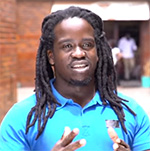 “Traditional clothes are worn to uplift our cultural heritage. This is done to continue the legacy. I am a Zulu man, but I design Xhosa traditional clothing. As a person, you should embrace other cultures as well. You should come up with something different. A person can mix 2 different cultural outfits and wear them as one. That way we continue our cultural heritage and allow it to evolve. There is a huge difference between a Zulu and Xhosa outfit. Zulus often use bright colors. Xhosa people, on the other hand, use royal or dark blue, white, orange, black, and red. At times it can just be blue and white, or black and white. They use simple colors like that”, narrates Nkosinathi Mbatha, African clothing designer.
“Traditional clothes are worn to uplift our cultural heritage. This is done to continue the legacy. I am a Zulu man, but I design Xhosa traditional clothing. As a person, you should embrace other cultures as well. You should come up with something different. A person can mix 2 different cultural outfits and wear them as one. That way we continue our cultural heritage and allow it to evolve. There is a huge difference between a Zulu and Xhosa outfit. Zulus often use bright colors. Xhosa people, on the other hand, use royal or dark blue, white, orange, black, and red. At times it can just be blue and white, or black and white. They use simple colors like that”, narrates Nkosinathi Mbatha, African clothing designer.
“Each color symbolizes something. They all have their meaning. For example, white represents a young virgin. Red represents love. Yellow represents culture, who you are”, says Nombuso Khulu, African folk clothing designer.
“The outfits are all different. Even the beads are done differently. We have glass and bone beads. The glass beads do help make the design fine, but not like the bone beads. The bone beads make the design fine and it looks nicer”, adds Nkosinathi Mbatha.

“Due to the geographical position of people, you’ll often find that people from the Eastern Cape will dress differently from people in Limpopo. So their clothes will be different. You’ll find that the elders then decided to design their traditional clothes in a specific way. The same applies to the Shangaans with their ‘mjeka’. They felt that the outfit represents who they are. So if they have to showcase who they are, then they’ll dress in that way. Then in KZN [KwaZulu-Natal], they wear ‘ama beshu’ and all those things. When you go to Swaziland, you’ll see then wearing ‘ama hiya’. So the traditional clothes differ because of the geographical position we have. It also relates to our socialization. We grew up seeing our forefathers dress that way as well. Then we followed”, comments Mkhulu Ntshingisa, African cultural activist.
Ordinary African people answer the question: Why do people wear traditional clothes?
– When a person is wearing a traditional outfit, they represent who they are and where they come from. The traditional outfit also indicates which culture I am from. I am wearing “izinjobo” or “imbadada” from the Zulu culture. Even “umqhelo” that is worn on a person’s head is part of the Zulu dress code. We also wear “isidlugulu” that has white shoulder pads. We would say that person is wearing their traditional clothes.
– It’s also a way to get more intact with your ancestors. It’s not just for “swag” or anything like that. When you wear your traditional clothes, they are kind of more with you at that moment.
– Traditional clothes should be worn from the heart because it can’t be judged. People these days have turned it into a fashion statement. People use it as a way of embracing who they are. I think traditional clothes are connected to a person’s spirit. It relates to how a person feels. Some people wear it for fun. When I wear my traditional clothes, it is because I am feeling something inside of me.
When and why did folk clothing designers start to make African traditional outfits?
“I started designing when I was still in school. My mother was also still alive at the time. My mother raised me through this business. She was able to take me to school through this business. So I took from her and realized that I could use my hands to accumulate income for myself. Instead of working for someone else and studying towards a particular career. Being self-employed also generates a bit more income on the side”, comments Nombuso Khulu.
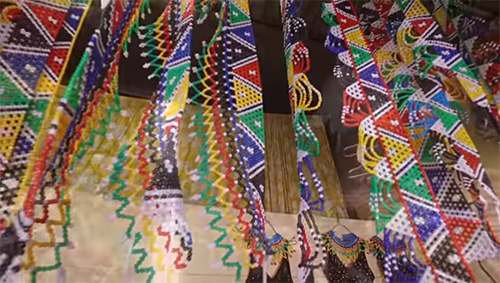
“I started this in 2008 when I came to Johannesburg. I saw my mother designing clothes, but she was doing a Zulu outfit. There are Zulu belts called ‘amacama’, she was doing that. She also designed the skirts as well. She designed an entire Zulu cultural outfit. So I wanted to do something different because the Xhosa outfits weren’t popular and there weren’t a lot of people doing it. So I decided to try that out. When I designed it, I fell in love with the designs. And I continued from there”, says Nkosinathi Mbatha.
What articles of clothing do they design?
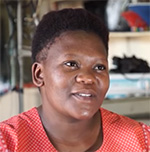 “My mother used to say that I should start by building something for myself. Meaning that I had to start by designing my own dress. So I started out by learning how to design belts. Which I wore on around my waist. When it comes to materials, I use a lot of ‘kotini’ and ‘ubuhlalo’. I use those regularly because I am able to make a belt in one day. ‘Isiqholo’ takes 3 days to design, because you first need to soak the grass. Then once it’s ready, you can get started with it and once done, you have to wait for it to dry out. When it’s dry, I can then cover it up. So it takes a while. So I regularly use ‘ukotini’, a needle, and ‘ubuhlalo’. So I can design the belts and the shoes”, narrates Nombuso Khulu.
“My mother used to say that I should start by building something for myself. Meaning that I had to start by designing my own dress. So I started out by learning how to design belts. Which I wore on around my waist. When it comes to materials, I use a lot of ‘kotini’ and ‘ubuhlalo’. I use those regularly because I am able to make a belt in one day. ‘Isiqholo’ takes 3 days to design, because you first need to soak the grass. Then once it’s ready, you can get started with it and once done, you have to wait for it to dry out. When it’s dry, I can then cover it up. So it takes a while. So I regularly use ‘ukotini’, a needle, and ‘ubuhlalo’. So I can design the belts and the shoes”, narrates Nombuso Khulu.
“I design Xhosa outfits for men, kids, women, and girls. I do a complete outfit for them. I learned this from a person that came to me and asked if I can design what was on the picture. So from there on, I challenged myself to try so I could see if I could do it. Then, it came out exactly as it was in the picture. I was used to the Zulu beads which are big, and then I moved to the Xhosa ones”, adds Nkosinathi Mbatha.
What else would they like to design?
“In all the cultural outfits, I’d like to do the old hat called ‘inswoyi’. I don’t know how to do it, but I’ve seen it before. I was told that you have to do with someone’s hair. You have to cut your hair and then design the hat with the hair. So I’d really like to explore that. It’s a hat that was worn in the olden days by some of the former celebrities”, says Nombuso Khulu.
“There’s a lot I’d still like to do. There are some designs that are still a bit complicated for me. However, if I see the designs live, then I’ll be able to do them. There are some designs I haven’t done that I’d still like to do”, answers Nkosinathi Mbatha.
What clothing items, colors, and patterns should be used in traditional costumes?
“Each time I design something, I learn something new. When it comes to hats, ‘isiqholo’ basically replaces the doek. That’s how they call it now in modern times. In the past, ‘isiqholo’ was worn as a sign of respect. If a woman is married, then they’d ask her to wear ‘isiqholo’ as a sign of respect. Then, we have ‘ibayi’ which is worn over a woman’s shoulder. You’ll notice that Zulu women often wear ‘ibayi’ wherever they go. That is also a sign of respect. The skirt with beading isn’t usually worn by a married woman. She normally wears ‘isidwaba’. If she wears the skirt, then it shows that she regards herself as still young. Such skirt should be worn by a girl that isn’t married. When it comes to patterns, it doesn’t matter who wears them, because it’s purely creativity. A person can choose whichever pattern they want. It’s not specific to who needs to wear it”, narrates Nombuso Khulu.
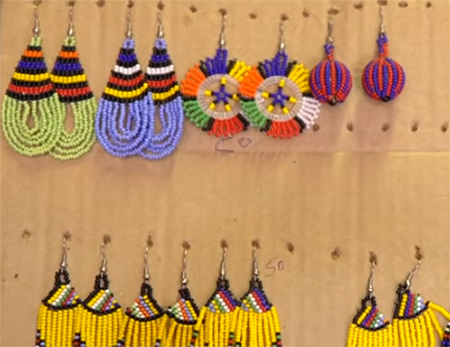
“For women, you can mix the colors around and maybe use powder blue, royal blue, and white. You can even do black and white. You can mix them around. Some people like royal blue, blue, and white – those 3 colors. Guys normally like powder blue and white. Or royal blue, powder blue, and white. At times, it’s black and white because people love those colors. It depends on an individual. They can choose black and white”, says Nkosinathi Mbatha.
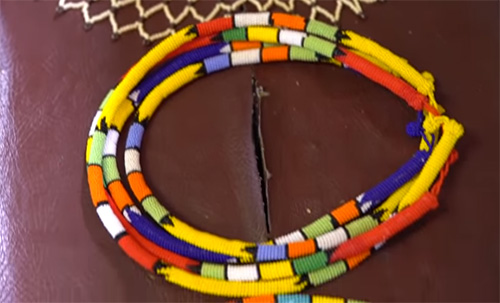
“‘Isidwaba’ can be designed in 3 different ways. You get one that is done with sheep’s skin. So you have to wash the sheep’s skin, cut it into pieces, and then plat it with your hands. Then you polish it. Then we have one that is designed with leather skin. The material is like a sweat. We normally buy this because it is sweat material. You buy it, knit it, and combine it with the machine. Because it’s soft, you can add on beads at the bottom. The sheep’s skin is harder so we can’t add in the beads at the bottom. Then we have an ‘isidwaba’ that is made of cow skin. We use washed cow skin. It has to be cut, knitted together, and polished as well. So the sheep’s and cow’s ‘isidwaba’ is used when the woman is being introduced to the family. A wife cannot be introduced with leather material. So the leather material is normally worn by bridesmaids. Those are people that accompany the bride. So those ladies will wear the sweat material. Because the bride is about to get married, So the bride has to wear the sheep or the cow’s skin. That is the real ‘isidwaba’. The same applies when a girl is doing ‘umemulo’. She doesn’t do that wearing this leather material. A young virgin wears a cow or sheep’s skin. Because a sheep is a small animal and it’s softer, it takes 5 days to design that. The cow skin is harder so it needs more time. It takes 2 weeks to design that”, explains Nombuso Khulu.
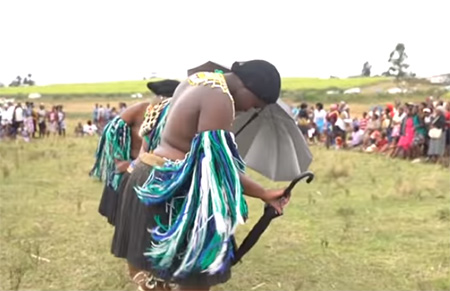

“As you can see in the photo below, the hats are all different. They are designed with strings. There are different color strings that we buy. Underneath we have a net. That also has different colors. So we buy a net, strings, and beads. Underneath we have ‘iqoma’, that is done with grass. It is made of pure grass. ‘Iqoma’ keeps the hat in shape, because it’s made of grass. So we first start with ‘iqoma’ underneath. You can choose a straight or an open-shaped hat”, adds Nombuso Khulu.
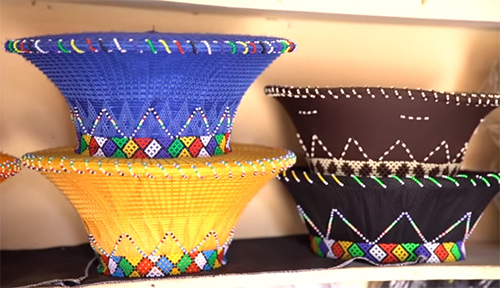
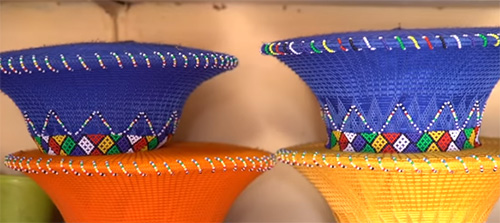
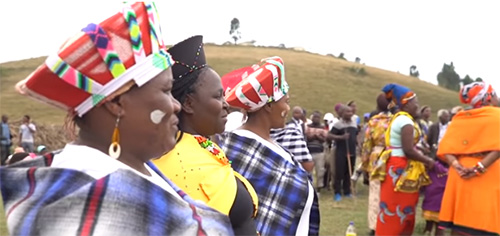
Who are their customers? What season is the most profitable? And what clothing pieces do they prefer to buy?
“I have different customers because we are all different as human beings. Some people are happy that the designs have evolved. They are happy that the outfits are now wearable and anyone can wear them. Some people prefer the old original designs. So if a client wants an original design, then we design it for them because it is known. A lot of people like the sweat ‘isidwaba’ because it’s easy to design and because people live in the suburbs now. So we get different clients. At times, a Tsonga client can come in and they want an outfit because they are marrying a Zulu person. So they are required to wear that traditional outfit. When you show them the sheep or cow design, they say it’s too heavy. So they often prefer leather because it’s easy and I can do different designs with it. A person is able to sit or move around with it. It’s a softer material. The cow and sheep design requires a person that can be able to wear it. It can be a person from the rural areas who knows how to conduct themselves when they are wearing it. A person’s conduct also varies according to what they choose to wear”, narrates Nombuso Khulu.


“There is no specific good season with the Xhosa outfits. The outfits move really fast. There is no good or bad season. In most cases, people usually buy the outfits regularly. The Zulu culture is different because they don’t wear traditional clothes in winter. They normally start wearing them after Heritage Day”, says Nkosinathi Mbatha.
“The skirts make the biggest sales. People from the township and suburbs buy them. The skirts are made of a mini matte cloth, which is pleated afterwards, and then we add the beads. This is my biggest seller. People also buy the vests and the beaded shoes, which are also my biggest sellers. People also often buy the male suites. People in the townships don’t like to be undressed with ‘ibeshu’ that reveals the body. So when they have these pants on, they feel dressed. Those are the things I sell a lot”, adds Nombuso Khulu.
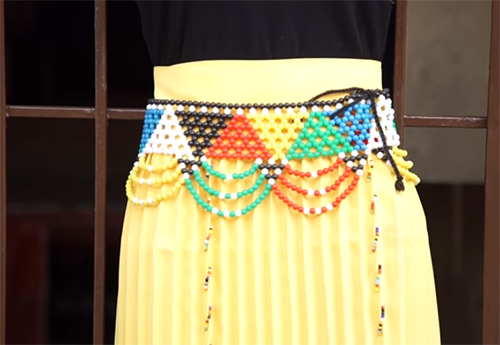
“I sell a lot of beads. People often want the beads only because they sometimes have the outfit already. I sell those a lot”, adds Nkosinathi Mbatha.
Why do people buy African folk clothing?
“People buy traditional outfits a lot because we’ve modernized them. Just like these pants. In the past, men used to wear ‘ibeshu’. That’s what a man wore. A female would then wear ‘isidwaba’. Now things have evolved. So anyone can wear it. The same applies to the pants – we buy normal pants at a store and we undo it and redesign it”, explains Nombuso Khulu.
“People normally buy traditional clothes for specific traditional events. A person could be going to the mountain and he’ll ask for the blanket and cover-ups”, says Nkosinathi Mbatha.
“I have a variety of customers. Foreign people also come and ask for designs that are appropriate for an elder Zulu woman. They’d pay with their dollars and we’ll go and exchange the money. Then we get customers from other cultures who want to try out the Zulu traditional outfit because they are going to a Zulu wedding. They’d buy and dress up. So I have different types of customers. As long as they love it, they’ll buy it”, adds Nombuso Khulu.

“People still love traditional clothes, but some people only realized it now because of all the modern designs that exist today. Some wear it because certain celebrities wear them, so they regard it as a fashion statement”, says Nkosinathi Mbatha.
“I think people love it even more now because even when a person gets married, then they’d wear their white gowns and then wear their traditional clothes. So I think as things evolve and time progresses, people will still love their traditional clothes. Nowadays, we have fashion shows that often showcase traditional clothes. A lot of kids are also doing a lot of cultural activities. So I think the love for it is growing because it is now going to be something that we are all growing up with. Even though things are modernized, there is still something that we are embracing”, says Nombuso Khulu.
(c)


